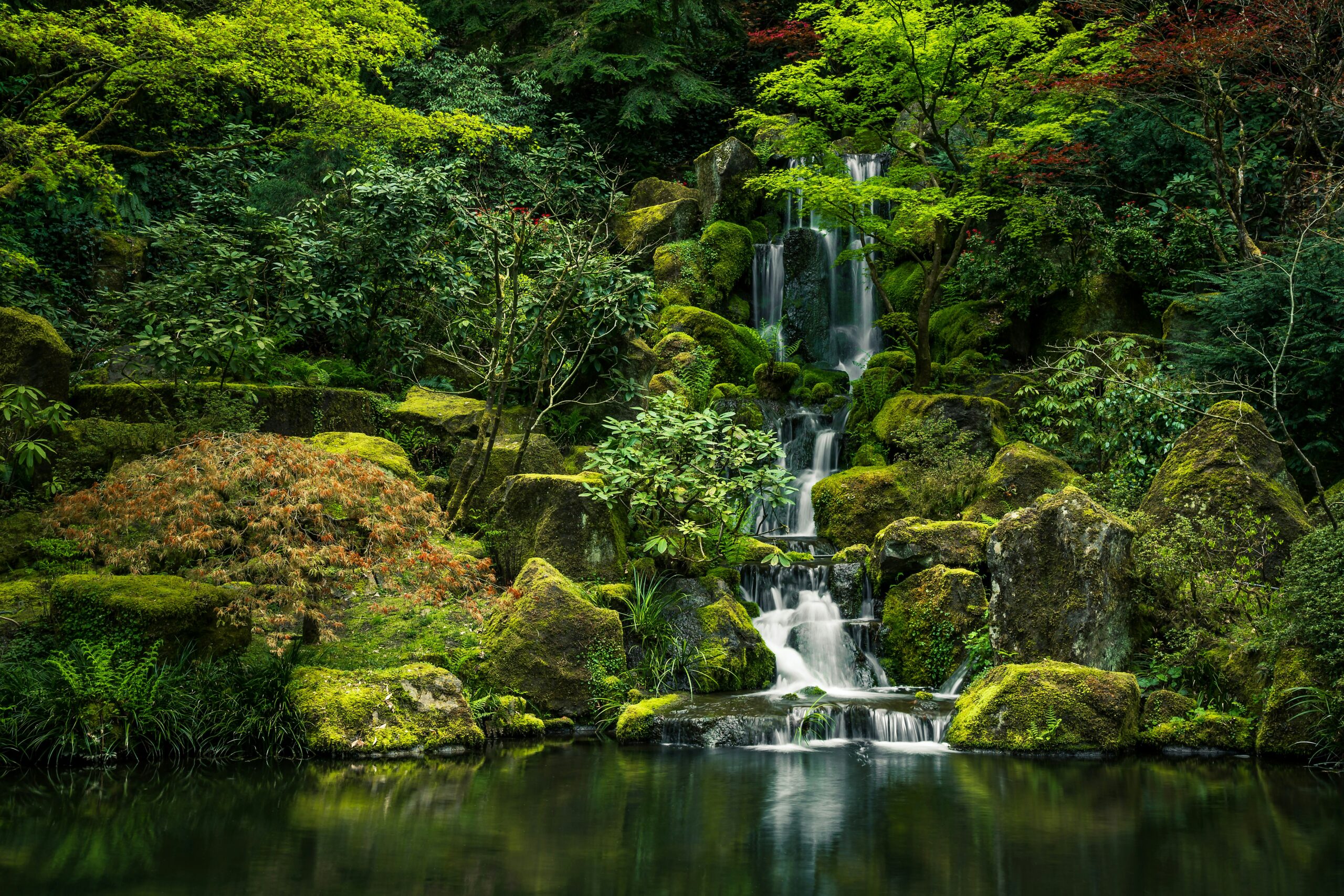Japanese gardens are designed to evoke a sense of peace and balance, combining elements like water, stones, and plants to create a natural, harmonious space. If you’re considering transforming part of your garden into a serene retreat, here are key elements to keep in mind.

The principles of yin and yang
A Japanese garden emphasizes asymmetry, avoiding straight lines and rigid structures. Instead, natural elements like stones, plants, and water features form a delicate balance. The contrast between emptiness and fullness—yin and yang—brings a sense of harmony and tranquility.
Choose plants that echo Japanese aesthetics, such as Japanese maples, bamboo, cherry trees, and moss. These not only add beauty but also fit naturally into the garden’s design.
Natural materials and textures
For paths, opt for natural stones like “ishi,” which look aged and blend well with the garden’s serene vibe. Combine gravel, sand, and wood to create paths or seating areas. Stay away from artificial materials like plastic to maintain harmony with nature.
Water and lighting elements
Water features, such as a small pond, waterfall, or fountain, are crucial in Japanese gardens, symbolizing the flow of life. Even a small space can accommodate a simple water element, adding both sound and movement to the garden.
Subtle lighting that highlights features like bamboo or a pond enhances the garden’s peaceful atmosphere, especially at night.
Final thoughts
Designing a Japanese garden is about creating a peaceful space that invites relaxation and reflection. By focusing on balance, using natural materials, and incorporating plants and water, you can bring tranquility to your outdoor space.

 Open Immovlan
Open Immovlan